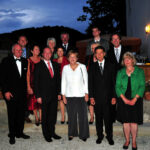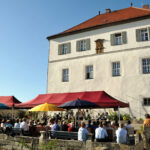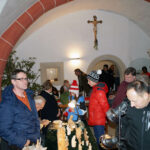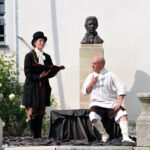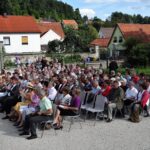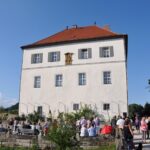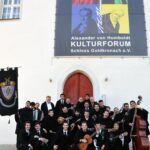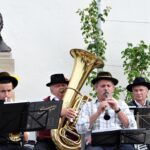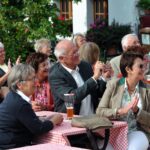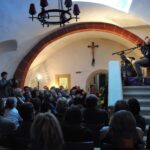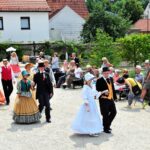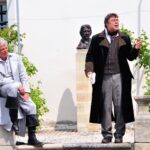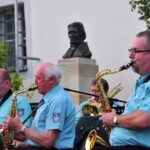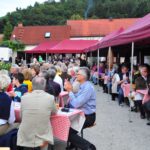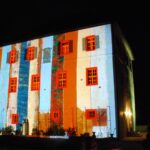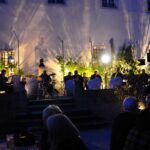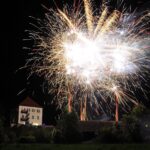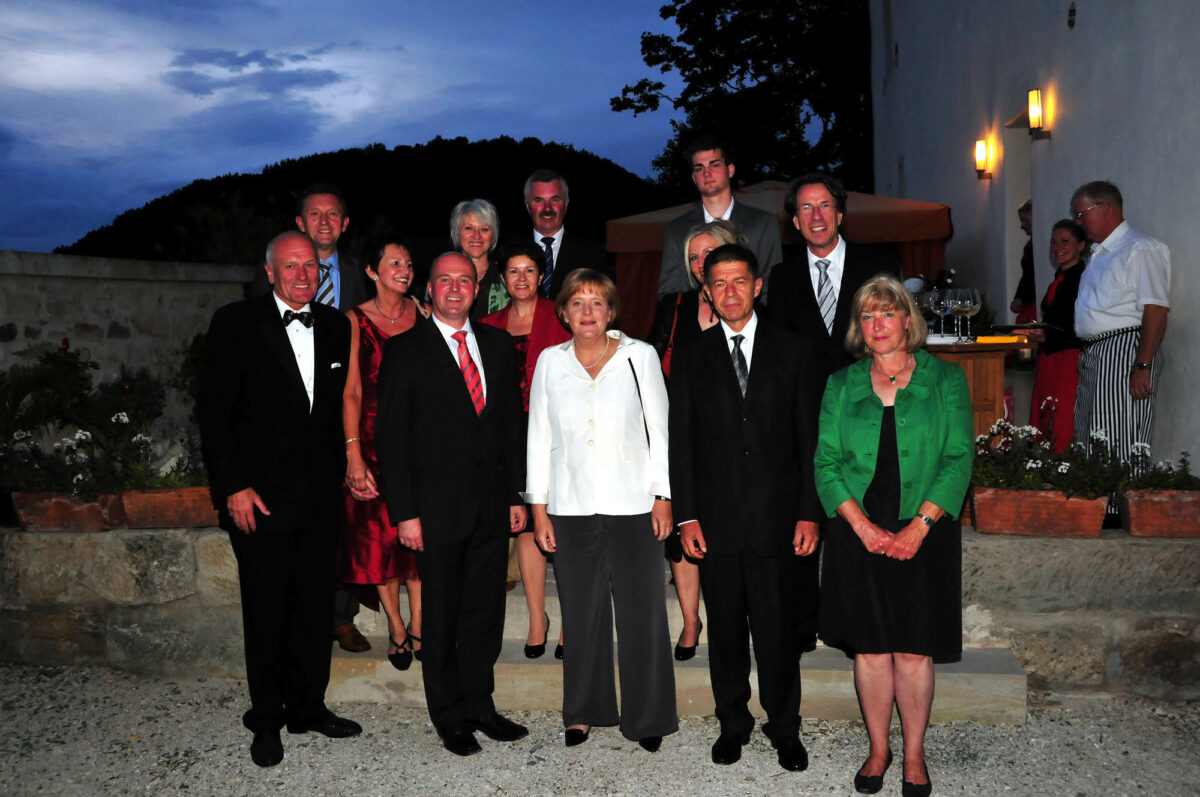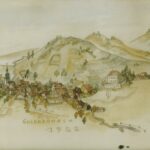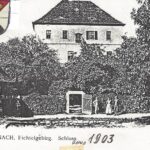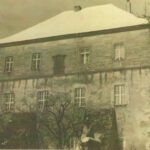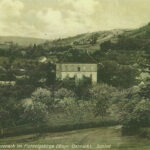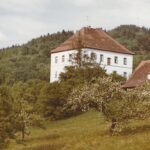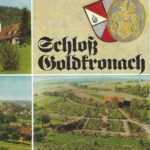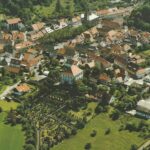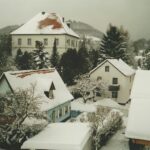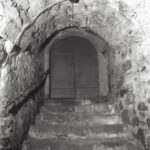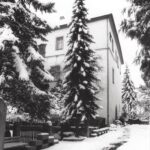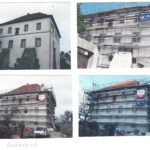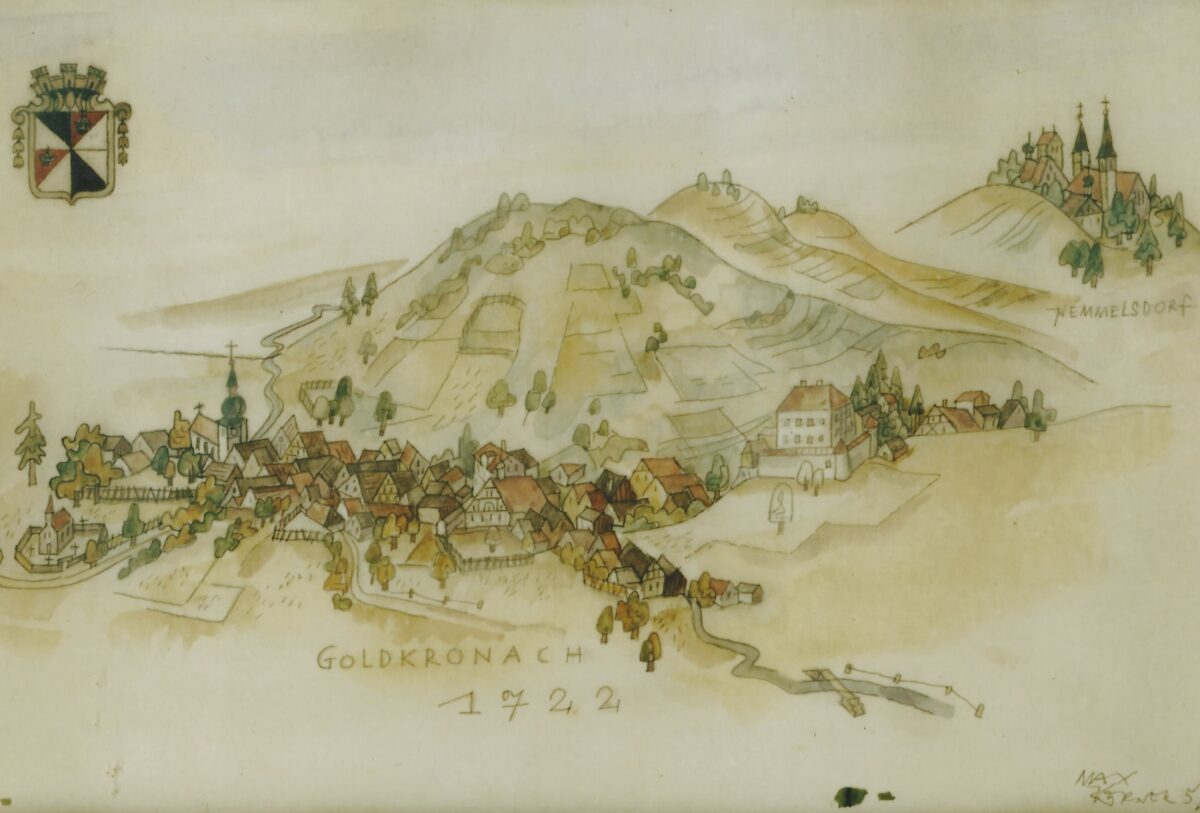Goldkronach Castle
At first glance, it doesn’t seem like a real castle – to discover the Goldkronacher palace in all its magnitude, you have to walk down and around the mountain on which it was built. From the back, however, its impressive dimensions are revealed. The palace was built on a rock crossed by the Franconian line (see QR 34). And the real attraction of the castle is that in the cellar, the displaced rock formations of the Franconian line show up in particular clarity.
The Goldkronach castle is the seat of the Alexander-von-Humboldt Forum. Here, cultural and educational events are performed all year round, including the Cultural Summer Goldkronach, with concerts, lectures and theater performances on the castle grounds.
The palace is the private residence of the family of the MP Hartmut Koschyk and therefore only accessible to visitors during events.
Examples in the QR-tour of some of the cultural highlights organized by the Humboldt Cultural Forum include videos of the 3D projection ‘Humboldt’s Dream’ and of the play ‘Jean Paul meets Humboldt’.
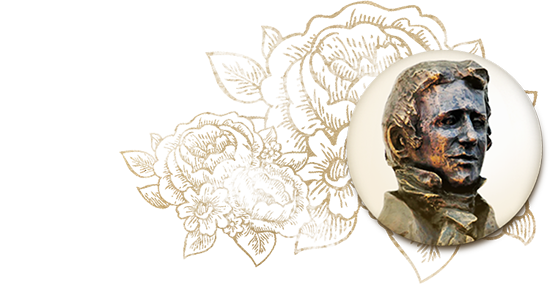
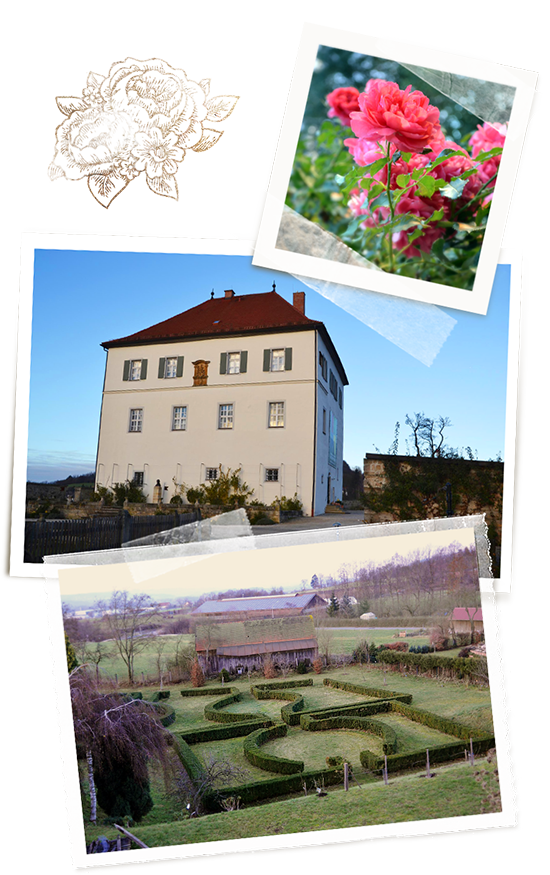
Alexander von Humboldt

In 1792, the Prussian central government took over the territory of the previously independent principalities of Ansbach and Bayreuth. To investigate the state of mining in Goldkronach, the Berlin administration sent the 23-year-old Alexander von Humboldt.
Humboldt filed a report to the relevant ministry and remained in Goldkronach as the lead mining engineer (Bergmeister), with the mission to revive the mining industry with the use of new technologies.
His activities were not limited to organizational and technical innovations. Humboldt’s name is – in Goldkronach as well as in the whole region Fichtelgebirge – connected with improvements to the miners’ working conditions and their families. For example, Humboldt re-introduced pensions for widows of miners, and he improved safety in the mines and tunnels. At his own expense, he built schools, and he developed new mining lamps and a respirator.
1796 Humboldt resigned from the civil service in order to go on the trips that made him world famous.
Tip: Visit QR 2 in Bad Berneck to find out more about the mine where he tested his lamp

Events by the Humboldt Cultural Forum
All year round, the Humboldt Cultural Forum stages high quality arts events: concerts, theatre, lectures and more – a huge contribution to the cultural life of Goldkronach!
The Humboldt Cultural Forum is a Charitable Association, which aims to keep alive the memory of Alexander von Humboldt, who lived and worked in Goldkronach between 1792 and 1795.
To mark the 220th anniversary of Alexander von Humboldt’s arrival in Goldkronach, the Forum created a series of ambitious cultural events, amongst those was the 3D Projection onto the Castle, see Video.
3-D Projection on the Castle
Christopher Drews created a three dimensional animated film, “Humboldt’s Dream”, which was projected on the Castle façade. The film was inspired by a true story: While Humboldt was testing a new mining lamp, lack of oxygen caused him to fall unconscious. His employees rescued him and dragged him out of the mine. As soon as Humboldt regained consciousness, he ran back into the mine to see if the lamp was still burning. (Tip: see also SPECIAL and QR2 – Dendrological Garden)
The Humboldt Trail
A short film showing the Alexander-von-Humboldt Information Trail, a route connecting 40 historic mining sites, such as show mines, dykes, slag heaps and more.
A short extract from the film ‘Gold im Berg’, by Arcadia Productions, 2008.
Castle History
A collection of photos documenting the historic castle and its grounds.
The Goldkronach castle was built in 1421 by the noble family of Laineck. The noble estate has had over 40 owners through its nearly 600-year history, including Margrave Christian Ernst.
In 2006, the Koschyk family moved into the castle, and saved it from decay. The Koschyks restored it with elaborate remodelling and renovations; for example, the massive buttresses on the façade were removed.
The Alexander von Humboldt Culture Forum has its offices in the castle’s ground floor. Their contributions enhance the cultural calendar of the town immensely. The “Franconian line” is uniquely visible in the cellar and can be viewed during tours and events.
A sensational evening in the courtyard
A very special event organized by the Humboldt Culture Forum took place on September 15, 2012: a three-dimensional animation by Christopher Drews, entitled ‘Humboldt’s Dream’, was projected over the facade of the castle at dusk.
Before the eyes of the astonished visitors, the facade becomes a stage, and the architectural elements are the set. The contours of the castle disappear: people walk on the facade, graphics of light and dark alternate with sounds and images inspired by mining.
Christopher Drews studied interior architecture and lighting design at Coburg and completed a Master’s Degree in Media Architecture at the Bauhaus University Weimar.
As a student in 2010, Drews became interested in the increasingly popular large-scale projections in urban areas. Supported by Prof. Auwi Stübbe, the so-called ‘video mapping’ also became a theme at Coburg. The possibilities of this young art form spread rapidly and soon reached Goldkronach and Hartmut Koschyk. Excited by the potential of the facade of Goldkronacher castle, Christoph Drews decided with the officials from Coburg and Goldkronach on creating a projection for the castle as his thesis.
Research
The lighting artist, Drews, discovered the subject and Alexander von Humboldt through the novel “Measuring the World” by Daniel Kehlmann, an entertaining introductory work to the so-called “last universal scholar”.
After reading the novel, Drews was motivated to portray Alexander von Humboldt and his modern principles in an artistic way.
Definition video mapping
Video mapping is an art form which deals with the possibilities of interaction between a structured and / or space-forming surface and the projected moving image media. It differs from a conventional projection or beamer presentation by the fact that the film transcends format to orient itself on the area used as the projection screen.
Idea
Drews’ idea was based on the well-documented event when Humboldt tested a new miner’s lamp, designed by him, in the mine of Berneck (see QR2 – Dendrological garden).
Humboldt fainted during the test through a lack of oxygen and was rescued by his assistant. This inspired Drews to create a dream that Humboldt could have had and visualized it as a 3-D animation.
Excerpt from the Humboldt monograph by Thomas Richter:
“In the autumn, Humboldt had a serious accident in the mine of Berneck, in which he almost lost his life. The mining engineer knew that explosive gases were a major danger in the tunnels. In order to recognize these gases quickly, Humboldt had constructed a rescue lamp which responded to dangerous “fire damp” (a carbon monoxide/methane mixture) with a bright burst of flame. The engineer and designer was so excited about the functionality of his rescue lamp that he forgot the danger involved: “To my great pleasure the attempt succeeded. The emergency lamp burned brightly in the bad air. I was curious and wanted to go to the location of the rotten wood. Killinger [his assistant] had to stay behind because he was still sick from a similar experiment which he had conducted in the Naila Refier. I got to the spot, set down my lamp and enjoyed its light. I was tired and very intoxicated; I sank to my knees beside the lamp. Apparently I called out to Killinger, but I do not recall anything. He groped in the darkness, and found me passed out next to the lamp. He pulled me out. ”
(published in 2009 Rowohlt Verlag in Hamburg)
The film makes a number of connections between the life of Alexander von Humboldt, its representation with the technology of architectural projection, and mining.



